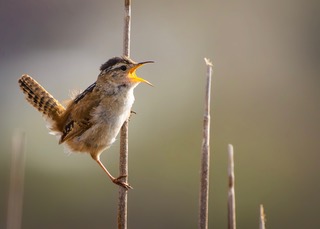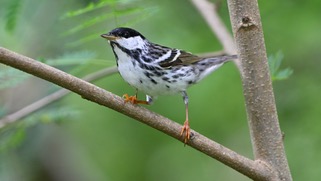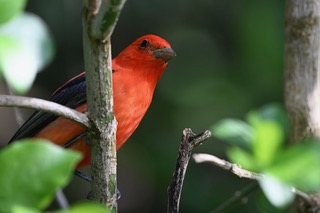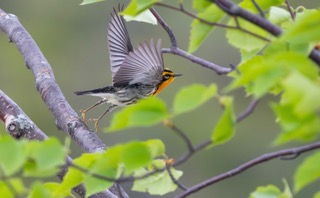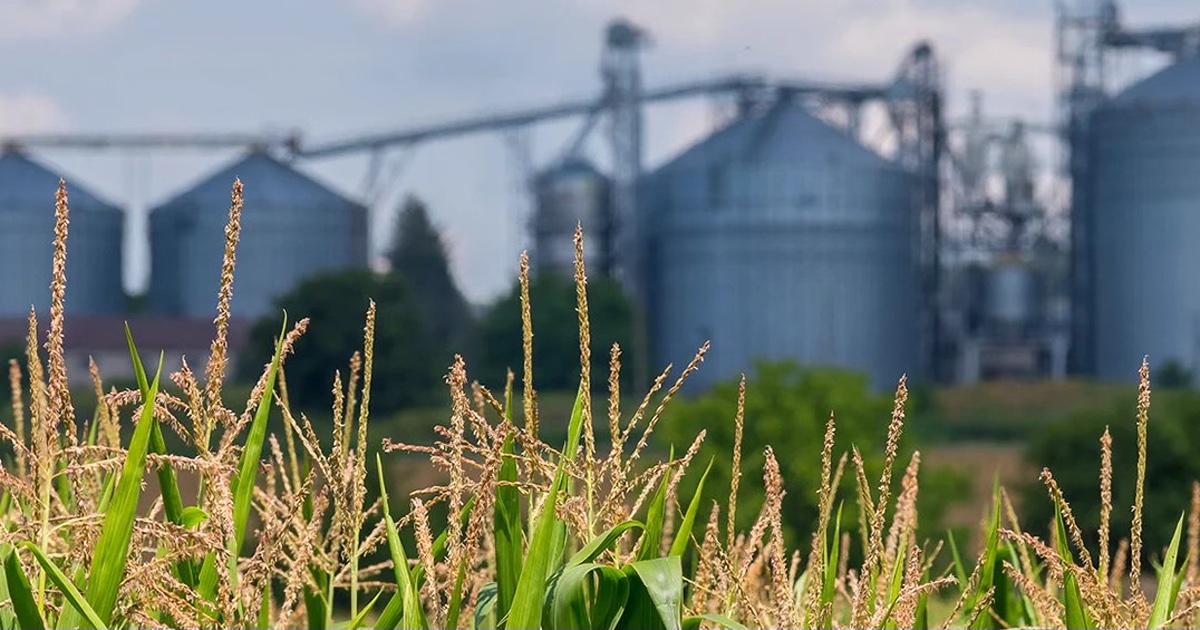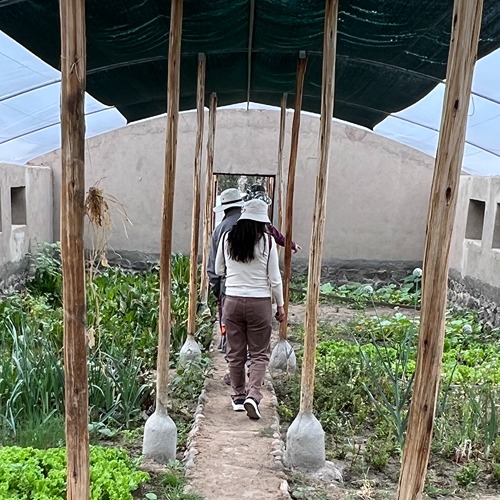Kyle Horton lands at Purdue to advance bird migration research
Purdue University’s College of Agriculture is proud to welcome Kyle Horton, a nationally recognized expert in ornithology and aeroecology, as an associate professor in the Department of Forestry and Natural Resources.
Horton was hired through Purdue's talent-based Moveable Dream Hires program. The program is designed to attract high-performing, top-caliber faculty to Purdue even when the topic-based openings in a given year do not match the moveable talent.
We are excited to welcome Dr. Horton to our college. As the intersection of wildlife ecology and technology becomes increasingly important to the future of forestry and natural resources, Dr. Horton’s expertise will help advance cutting-edge solutions to today’s most pressing ecological challenges. At Purdue, where innovation and technology are central to our mission, we’re thrilled to have another outstanding researcher contributing to the future of digital agriculture and helping shape the next generation of leaders.” -Bernie Engel, Glenn W. Sample Dean of Agriculture
Flight paths and forecasts: Where tech meets talons
Each spring and fall, billions of birds take to the skies, making airspaces one of the most dynamic, yet least understood ecological habitats. Horton’s research sits at the heart of this airborne world, exploring ornithology, particularly bird migration studies, and aeroecology, the study of how organisms use the airspace above us.
A dominant theme of my lab and our research is characterizing those airspaces — how they’re structured, how organisms use them and how that use is changing. We study how these aerial habitats are connected to the terrestrial environment, and how climate change is transforming them.” -Kyle Horton
To make sense of this constantly shifting environment, Horton’s Aeroecology Lab relies on a range of tools—weather radar, acoustics, bird banding, Radio Frequency Identification (RFID) and even community science data—to track avian movement at an unprecedented scale and make informed decisions for wildlife conservation. As global datasets continue to expand rapidly, his team is scaling up research through advanced data science, using vast volumes of information to uncover large-scale ecological patterns. His lab explores key topics, including avian flight strategies, long-term changes in migration timing (phenology), population estimates and migration forecasts.
Using weather surveillance radars that have collected data every five to 10 minutes over the past 25 to 30 years, the team can analyze how migration patterns, trends, intensities and timing have shifted in response to climate change. This extensive dataset also enables near real-time predictions of bird movements—both in the air and on the ground—offering valuable insights for conservation and research.
We’re using technologies that have been developed and engineered for the study of weather phenomena but repurposing them to examine massive-scale bird movement, which is very unique to our lab. This type of research connects us with birdwatchers and naturalists, and is a great example of applied science with real conservation potential. We want to inspire birdwatchers to head out the next day after a migration event, collect more data and really experience nature.” -Kyle Horton
Beyond observation and forecasting, Horton’s team is also working to reduce human impacts on migrating birds to help them safely navigate their seasonal journeys north or south. One significant threat is artificial light at night, which can disorient birds during flight and interfere with their natural flight paths.
“If we can predict when and where birds will be flying, we can also sort of advocate for turning off lights at specific sites and times across the United States,” stated Horton.
Bird photography by Kyle Horton.
Tracking Horton’s soaring career

Originally from Western New York, Horton holds a bachelor’s degree in biology from Canisius University, a master’s in wildlife ecology from the University of Delaware and a Ph.D. in ecology and evolutionary biology from the University of Oklahoma. He also completed an Edward Rose Postdoctoral Fellowship at the Cornell Lab of Ornithology, which he fondly describes as the “Hogwarts of the bird world,” and where he taught introductory ornithology.
His doctoral work at the University of Oklahoma provided a strong foundation in meteorology and sparked his interest in using weather surveillance radar to study bird movements—a technique that remains central to his research today, blending atmospheric science with ecological inquiry.
Before joining Purdue, Horton spent six years as a faculty member at Colorado State University in the Department of Fish, Wildlife and Conservation Biology. There, he taught a variety of courses, such as fish and wildlife projects, spatial ecology, landscape ecology, migrant ecology and conservation and transdisciplinary convergence.
Throughout his tenure at Colorado State University, Horton earned multiple accolades, including the 2021 and 2024 Warner College Outstanding Publication Award, 2023 Provost Research Scholar Award and 2024 Warner College Dean’s Award for Excellence to an Early Career Faculty Member.
As an active member of the Wilson Ornithological Society, Association of Field Ornithologists and American Ornithological Society, where he recently became a Fellow in 2025, Horton has been a dedicated ornithologist for over 15 years. His passion for birds is evident in his academic pursuits, which include 13 research grants, 71 peer-reviewed publications and over 3,000 citations.
Horton is frequently invited to present at national and international conferences, with recent appearances at the Aviation Wildlife Management Conference and the International Association for Landscape Ecology. He has also contributed to advanced training programs, such as the Radar Aerocology Training School, where he shared his expertise in applying weather surveillance radar, remote sensing, data visualization and data processing techniques to aerocology.
Spreading his wings: From New York to the Midwest migration corridor
For Horton, joining Purdue felt like a natural next step.
With the university’s growing emphasis on digital agriculture, innovation and cross-disciplinary collaboration, he saw a clear opportunity to align his research with the cutting-edge work happening across campus.
Kyle’s research approaches will enhance our department’s strengths in using digital methods to inform conservation science. He is also highly skilled in visualizing such data, and very effective at communicating his research in a compelling manner." -Tomas Höök, professor and department head of forestry and natural resources
In his new role, Horton will balance teaching, mentoring and research. He will advise undergraduate and graduate students, guide postdoctoral researchers, lead research projects and seek out new collaborations and funding opportunities that support his lab’s growing work.
“While science is really at the heart of my position, communicating my findings back to the public is something I cherish and take pride in, especially at a land-grand university like Purdue,” explained Horton. “I try to chat about conservation, the threats birds are facing and the tools we’re developing to help mitigate some of things.”
Now based in the Midwest—one of North America’s migration hotspots—Horton is eager to expand his research, grow his lab and build new partnerships across Purdue and beyond.
I look forward to seeing how Kyle will enhance not only Purdue’s research contributions in conservation science, but also our teaching and engagement strengths." -Tomas Höök


